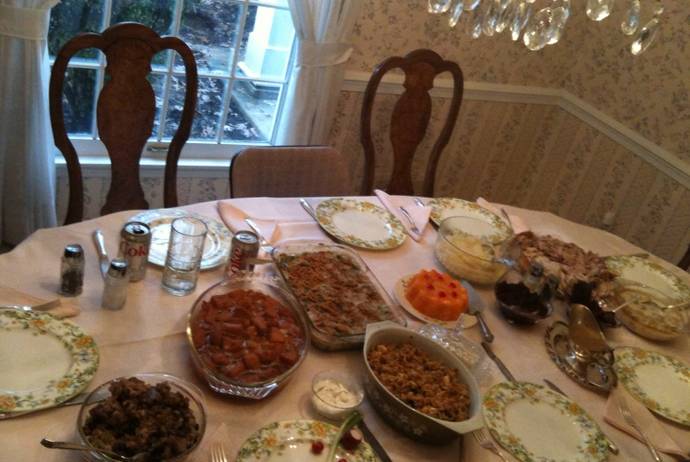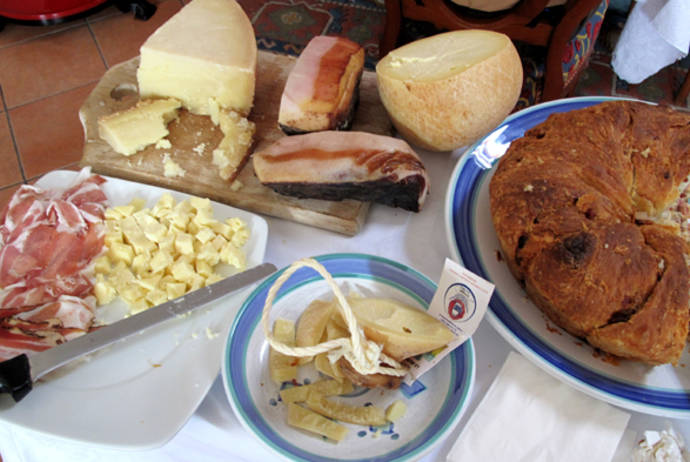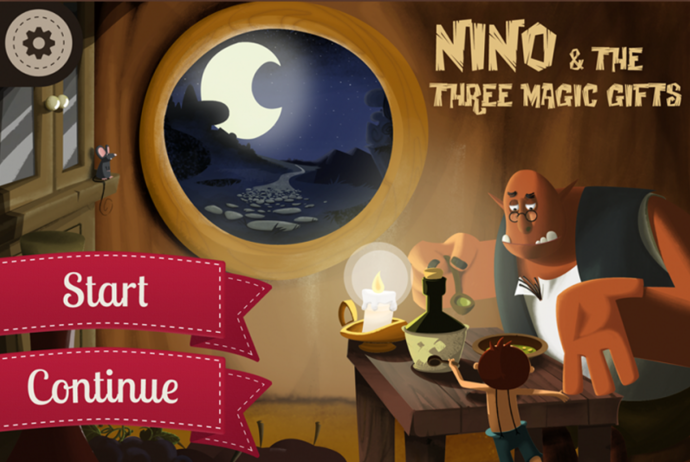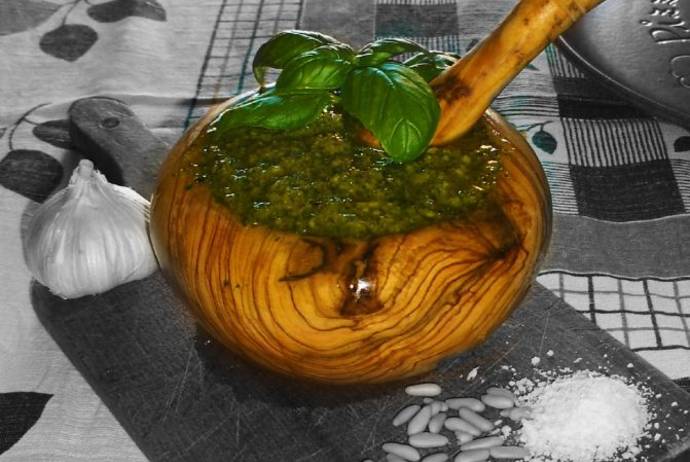The United States is a country populated by people of all different nationalities and cultural backgrounds. No matter when they touched this soil, all of them more or less brought the symbols, beliefs, and traditions of their land of origins to their new country.
Today the different ethnic groups honor their religious and cultural heritage in dates established in agreement with the national government, so that everybody knows, as an example, that Saint Patrick’s Day is the Irish Holiday, Columbus Day celebrates Italian culture, Hanukah and Passover are Jewish, and Christmas and Easter are Christian.
But there is one day that really unifies the country as a nation. It is one single holiday that everybody, independently of their skin color and religious beliefs honors. That day is Thanksgiving Day, celebrated on the fourth Thursday of November every year. That’s the “family holiday”, and two, three, four generations of members of the family sit around a table to thank God for everything they have been given, just as the Pilgrims and the Native Indians did hundreds of years ago to give thanks for the good harvest they had.
And what is the symbol of Thanksgiving? Well, the turkey of course. Everybody knows it! Dozens of dozens of millions of turkeys are stuffed on this day and become the absolute “kings” of the traditional dinner. And, guess what? That’s the ONE time that everybody follows the tradition, even us Italian-Americans. Yes, if we usually add a touch of Italianity to everything we cook in our daily life, on this day we kind of promise to become 100% American and don’t even dare to alter the traditional meal. Or at least we try not to…
For as much as an Italian-American tries to be a “true” American for one day only, there is
always a drop of his blood that doesn’t follow the flow. Take my family’s case. Well, first of all, we kind of live with the nightmare that we won’t find the perfect turkey for us if we wait too long. So, let’s order it at least two, better three weeks before…Just to make sure you know…
But, what is the perfect turkey for a family of 8? Well of course the one that weights AT LEAST 12 pounds. But why not 21? My grandpa asks himself, his wife, and his daughter before the astonished face of a Shop Assistant over at Giant’s. As my (Polish) Grandma went for 10, and my (Italian-American) mom for 12, my grandpa finally accepted a compromise for 18. That means more than 2 pounds of meat for each one of us…. Somebody there went back home asking himself if it would have been enough…
So the dinner, as we said, is traditional On the menu there is a list of “MUST” dishes: string bean casserole, creamed onions, sweet potatoes, mashed potatoes, cranberry sauce, stuffing (two kinds, needless to say), orange and mandarin pudding, and what else? Can’t remember… Well, of course the turkey with “emergency” gravy on the side in case it comes out too dry (most probably). And, at my seat, a whole jar of honey mustard, because the gravy in this case is definitely not for me.
Ok, ready? Set? Go! The cooking marathon starts two days before Thanksgiving, with potatoes to peal, sauces to make, and onions and other veggies to chop. On Thanksgiving Eve, the atmosphere is a little more relaxed then the day before, because after rushing up and down you realize that you have done almost everything and after all there was no need to rush so much. It’s Wednesday and the New Yorker is coming (me).
As an Italian-American myself, I HAD TO add something to this dinner! Could I let my family starve??? So, I focused on the dessert (of course). Pumpkin pie with whipped cream, and ice cream cake are not enough. No, no. So…here I come with a full tray of Cannoli from what supposedly is the best Sicilian pastry shop in town, Villabate in Bensonhurst, Brooklyn. You know, just in case… Of course, I become my Sicilian-Italian-American grandpa’s favorite granddaughter in a second, especially when I allowed him to take short trips to the fridge downstairs to “check if the cannolis are all right”….
The best thing about Thanksgiving Day is waking up in the morning with the idea of opening the turkey and stuffing it. Before doing this last process, in fact, you need to take the interiors away! And that’s another thing that my Grandpa (who worked as a butcher at a very young age) and I have in common: we look at the carcass of a turkey with an extraordinary “cold blood”, using knives, hands, and every other tool we might need to “prepare” it for the oven. And, personally, I wake up early just to do that.
Another typical Italian-American thing we do on Thanksgiving? Take out all the silver from the draws, use the best tablecloth, and the fanciest tea service. It doesn’t matter if you’ll have to wash and clean everything by hand after dinner and spend the rest of the day doing that. It is “the special occasion”, the once-a-year- moment in which you don’t care to keep objects you inherited from your great-grandma in cellophane bags. Using them in everyday life is equal to a sacrilege in our minds.
The dinner, that we took three days to prepare, is consumed within fifteen-twenty minutes. Everybody is full as a balloon, in my plate you can still see spots and splashes of mustard all around the edges. I, we, survived one of the greatest challenges of the year: having a huge meal that doesn’t include pasta. We really put ourselves into it…
But what happened to the 18 pounds of turkey? Well, almost more then a half is still laying
there on the silver tray. What to do with it now?? My mind starts imagining a month of turkey sandwiches for lunch, and a hint of horror fills my soul. My grandpa must have seen it because he starts asking my mom and I if we know of any Italian dish made with turkey so that we can recycle it in other tasty recipes. But no way. Italians, wisely, do not contemplate turkey in their diet.
So how do we decide to solve the problem? Well, pretending again to be perfect 100% American: scheduling hours and hours of shopping for the day after. After all, it’s Black Friday and we have to keep America green! And if we get hungry? We’ll go out to eat, why not!?!?!


































 answered but she wasn’t able to give them any information because she didn’t know anything about “a newborn King”! The kings invited her to go with them, but the good lady refused because “she had too much to do at home”. However, she understood pretty quickly that she had made a huge mistake and she started her own journey. But she couldn’t find Jesus... so guess what she did... she gave a gift to every single child she found on her way, hoping that he was the Messiah. The legend says that from that time on she never stopped searching. So, every year, on the 6th of January, she takes her broom and travels the world looking for Jesus. She stops in every house and leaves small gifts for the good kids, while the bad kids receive a whole bunch of coal!
answered but she wasn’t able to give them any information because she didn’t know anything about “a newborn King”! The kings invited her to go with them, but the good lady refused because “she had too much to do at home”. However, she understood pretty quickly that she had made a huge mistake and she started her own journey. But she couldn’t find Jesus... so guess what she did... she gave a gift to every single child she found on her way, hoping that he was the Messiah. The legend says that from that time on she never stopped searching. So, every year, on the 6th of January, she takes her broom and travels the world looking for Jesus. She stops in every house and leaves small gifts for the good kids, while the bad kids receive a whole bunch of coal! Those were some moments! I remember that my sisters and I sort of locked up our stockings: they were our treasures, we could share a toy but not a box of lollypops! I must confess that we are still that way: we grow up, yes, but our bellies do too!
Those were some moments! I remember that my sisters and I sort of locked up our stockings: they were our treasures, we could share a toy but not a box of lollypops! I must confess that we are still that way: we grow up, yes, but our bellies do too!




